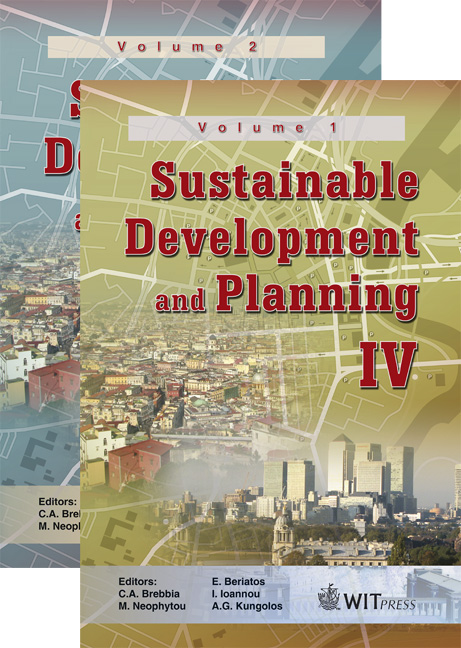Sustainability And The Megacities: The Gato Park Housing Complex In São Paulo, Brazil
Price
Free (open access)
Transaction
Volume
120
Pages
10
Page Range
65 - 74
Published
2009
Size
1,249 kb
Paper DOI
10.2495/SDP090071
Copyright
WIT Press
Author(s)
L. Medrano, J. R. Spinelli & A. R. Bertuccelli
Abstract
The city of São Paulo, with approximately 20 million inhabitants, is a megacity. Its accelerated growth requires the development of architectonic and urban solutions in the rate of its transformations. Social Interest Homes (SIH) constitute one of the most apparent problems of this metropolis, a problem that for decades had as an alternative the construction of large housing complexes or occupations on the outskirts, generally occupying green areas or water sources. Another alternative has recently been tried for SIH – compact occupation in central areas. These new proposals confer power on actions that combat the partial neglect of the infrastructure existing in central areas, including their historical and cultural potential. Urban management in effect between the years 2000 and 2004 idealised public policies that sought to make resources available for the urbanisation of slums, producing verticalised buildings in the places where the latter were to be found. The urbanisation of the Gato slum (Favela do Gato), in São Paulo, with the creation of the Gato Park Housing Complex, is an example of these actions. The intention of the present article is to analyse this project, taking into account new concepts in collective social housing and sustainable development. Keywords: housing in central areas, sustainability, megacities. 1 Reurbanisation of urban centres and sustainability The rehabilitation of urban centres, principally those of big cities, has been a widely discussed subject in the last few decades – if the real city used to be a constraint on modernising ideals of planning, it is today a fundamental
Keywords
housing in central areas, sustainability, megacities.





